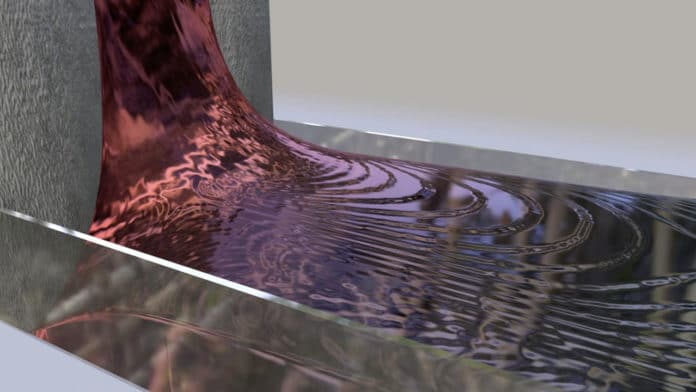Fourier’s well-known heat equation, presented in 1822, portrays how temperature changes in space when heat flows through a material. As a rule, this formulation works well to depict heat conduction in macroscopic objects (usually, a millimeter or bigger), and at high temperatures. But, the formulation was limited by overheating.
Also, it does not describe hydrodynamic heat propagation, which can appear in electronic devices containing materials such as graphite and graphene.
One such phenomenon is Poiseuille heat flow, where heat propagates within a material as a viscous-fluid flow. Another, called “second sound,” takes place when heat propagates in a crystal-like a wave, similar to how sound spreads through the air.
Till now, scientists used to analyze such phenomena using explicit microscopic models, such as the Boltzmann transport equation. However, the complexity of these models means that they cannot be used to design sophisticated electronic devices.
Now, Michele Simoncelli, a Ph.D. student at EPFL, together with Andrea Cepellotti, a former EPFL Ph.D. student currently at Harvard, and Nicola Marzari, the chair of Theory and Simulation of Materials in the Institute of Materials at EPFL’s School of Engineering and the director of NCCR MARVEL has solved this problem. They have shown that the way heat originating from the atomic vibrations in a solid can be portrayed thoroughly by two novels “viscous heat equations,” which extend Fourier’s law to cover any heat propagation that isn’t diffusive.
Simoncelli said, “These vicious heat equations explain why and under which conditions heat propagation becomes fluid-like rather than diffusive. They show that heat conduction is governed not just by thermal conductivity, as described by Fourier’s law, but also by a second parameter, thermal viscosity.”
The breakthrough is expected to help engineers in designing next-generation devices, particularly those that feature materials such as graphite or diamond in which hydrodynamic phenomena are prevalent.
The new formulation of Fourier’s law into viscous heat equations yields results for graphite that is in striking agreement with these experiments and also predicts that this hydrodynamic heat propagation can be observed in diamond even at room temperature. This prediction is awaiting experimental confirmation, which would establish a new record for the maximum temperature at which hydrodynamic heat transfer is observed.
The discovery offers a new and original insight into heat transport. It also lays the groundwork for an understanding of shape and size effects – not only in next-generation electronic devices but also in “phononic” devices that control cooling and heating through engineered superstructures.
This breakthrough is published in Physical Review X.
